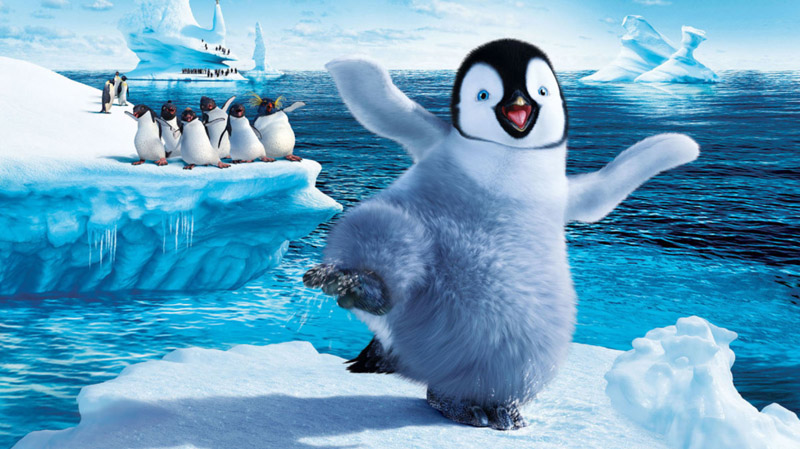Focusing on the animated, musical feature Happy Feet (George Miller, 2006), this essay explores the implications of the use of motion capture for the representation of black performance. As an optical-digital hybrid, motion capture combines records of actual movement with digitally created images and environments. The technology renders the performer simultaneously visible and invisible: real movements are visible on screen, but the performer’s body is effaced in favor of a computer-generated character. This is particularly problematic when considering the role of race in digital animation. In Happy Feet, motion capture transfers the movements of noted African American tap dancer Savion Glover to the film’s main character, Mumble (voiced by Elijah Wood), a young penguin whose distinctive, exuberant dancing makes him an outcast from his community. I argue that Glover’s general absence from the screen (except through his digitally embodied movements) mirrors the film’s seemingly uncritical thematization of the usurpation of African American musical styles by whites, for either parody or profit (or both). By voicing the character of Mumble with a white actor, yet driving his digital body with the movements of a black performer, the film activates a strange sort of minstrelsy that perpetuates the historical association of African Americans with the body and physical agility. Ultimately, I argue that the de-racialization of Happy Feet’s main character attempts to cover over the film’s use of racial stereotypes, e-racing the histories of inequities behind the film’s music and dance. Motion capture and other digital techniques may therefore be implicated in this process of naturalizing racial discrimination, by making it, like Glover’s body, invisible.
“Blackface, Happy Feet: The Politics of Race in Motion Capture and Animation,” Special Effects: New Histories, Theories, Contexts, edited by Dan North, Bob Rehak, and Michael Duffy (BFI/Palgrave, 2015), 114–126.
